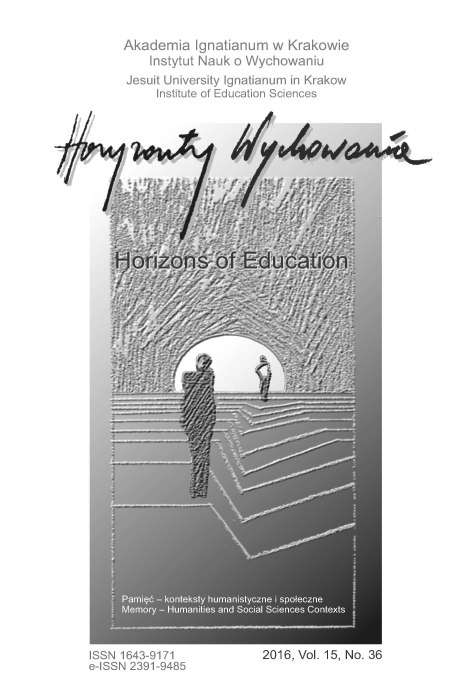Entering the World of the Sacred: Memory, Time and Space in John Paul II’s „Roman Triptych”
Pamięć, czas i przestrzeń w „Tryptyku rzymskim” Jana Pawła II
Author(s): Katarzyna StadnikSubject(s): Social Sciences, Language and Literature Studies
Published by: Uniwersytet Ignatianum w Krakowie
Keywords: Cultural Linguistics; imagery; memoryscape; panchrony; Karol Wojtyła
Summary/Abstract: RESEARCH OBJECTIVE: The paper addresses the role of memory in sustaining the continuity of culture. While culture is seen as an idealised cognitive system, comprising the knowledge, values, and beliefs of members of a community, language is viewed as a cognitive tool that functions an aid to cultural transmission.THE RESEARCH PROBLEM AND METHODS: We underscore the fundamental importance of memory as a cornerstone of the correlation between the axiological and pedagogical aspects of the transfer of knowledge across generations of community members. The paper adopts a cognitive‑cultural viewpoint on the phenomenon of memory and its grounding in culture. We employ the cognitive‑linguistic methodology of converging evidence, including selected insights from cognitive psychology. In our study, we investigate this issue by exploring the imagery of religious language, the Bible being the ultimate source of Christian ideas on how to represent abstract notions concerning religious truths.THE PROCESS OF ARGUMENTATION: Specifically, we analyse the use of linguistic imagery in John Paul II’s Roman Triptych. Since the Author’s speculative thought encourages meditation on the human condition in the world and their relationship with God, a substantial amount of imagery is Biblical in nature.RESEARCH RESULTS: We underscore the creativity of Wojtyła’s linguistic choices that reveal a specific conceptualisation of time and space, which derives from the Author’s sociocultural situatedness.CONCLUSIONS, INNOVATIONS AND RECOMMENDATIONS: In conclusion, we account for the role of spatial thought and external representations in shaping the unique space‑time of the Triptych. We suggest that the results of the linguistic‑cultural analysis may foster the dialogue between science and religion by offering our own interpretation of panchrony, which we show to be derivative of human situated cognition, rather than a label applicable to a perspective onto the language‑time relation within the domain of linguistic study (vis‑à‑vis the dichotomy of synchrony and diachrony).
Journal: Horyzonty Wychowania
- Issue Year: 15/2016
- Issue No: 36
- Page Range: 67-86
- Page Count: 20
- Language: English

